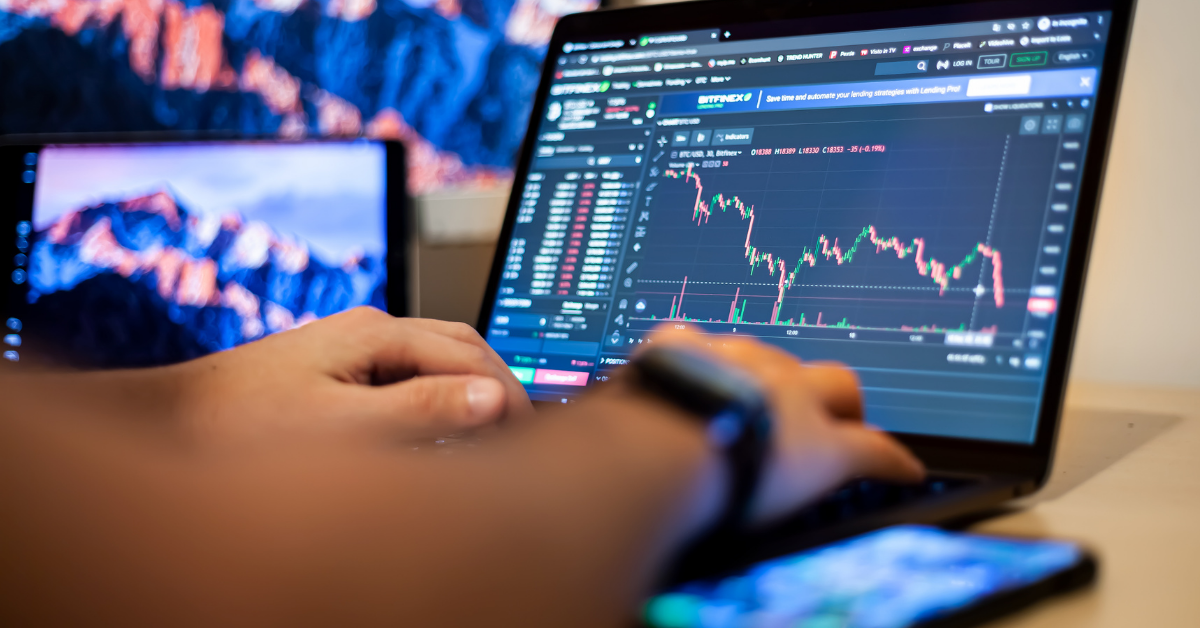
In proprietary trading, with traders trading with firms' capital, risk management is not overly important; it is the only way forward. The purpose of prop firms is for traders to protect the firm's capital and gain consistent income. According to all risk management measures in use with MT5, the stop orders are fundamental to disciplined trading. For both professionals and just beginners stepping into the world of forex, stop orders minimize emotionally charged decision-making on the part of traders while remaining within the risk guidelines of prop firms.
In this article, we will describe how stop orders work in MT5, why risk management matters in prop trading, and how the different types of charts in MT5 offer help traders see where they are putting their orders.
How Do Stop Orders Work in MT5?
Stop orders in MT5 are orders that get executed in the market only when the market price reaches a given level. The stopped orders market regime confirms the moves in momentum, whereas limit orders capture the market in favorable pricing. There are two main varieties of stop orders offered on MT5:
1. Buy Stop-an order placed above the current price and activated when the market goes up. This guarantees purchase for the traders only after an Up-trend has been confirmed.
2. Sell Stop-an order placed below the current price, activated when the market goes down. The sell allows traders once they see a clear case of bearish momentum.
Importance of Stop Orders to Prop Traders
Prop firms are very serious about the risk and usually impose the strictest limitations on maximum daily losses, drawdowns, and positions sizing. The reason why stop orders play a major role in prop traders ensuring compliance with these rules include:
- Automatic Disciplines: Instead of chasing trades or acting with an eye-withed instinct, traders allow the market to come to their intended levels.
- Less Drawdown: In confirming the momentum before entering trades, traders constrain themselves while preventing premature entries that translate into unwarranted loss.
- Risk Rule Compliance: It is simpler to quantify and plan for the stop orders, making sure that no position breaches the limits defined by the firm.
- Scalability: Prop traders often deal with several assets. Stop orders allow them to automatically enter into positions throughout the market without having to continuously monitor them.
How Stop Orders Are Applied with Local Character Analysis
For stop orders to be put into action, sufficient technical analysis must be done. Prop traders will utilize all types of charts on MT5 to pinpoint price levels:
- Candlestick charts: These show reversal or continuation patterns. A bullish engulfing candle, for instance, may confirm the need for a Buy Stop just above resistance.
- Bar chart: It is preferred generally by swing traders at breakout levels where Sell Stops could be set below recent lows.
- Line chart: For beginners looking to simplify price trends, this shows spots where stop orders would line up with trendline breaks.
Switch between chart types to refine an entry, thus implementing stop orders on vigorous technical signals.
Stop Orders and Risk Management
Risk management is what prop trading boils down to. Stop orders supplement that in so many ways:
- Stop loss placement: Any Buy Stop or Sell Stop can always come with a stop-loss order to define how much risk a trader is willing to accept for that trade.
- Breakout trading: Traders set stop orders at breakout levels, entering only if the market proves their analysis correct.
- Avoiding false entries: Instead of entering blindly at support or resistance, traders will often let stop orders confirm price direction before putting their capital at risk.
For the beginners among those who trade forex for beginners, this structure shows why planning trades in advance is vital for long-term success.
Advanced Applications of Stop Orders
Prop traders sometimes apply their stop orders strategically in more involved setups:
- News trading: For high-impact announcements, traders set Buy Stop and Sell Stop orders on both sides of the market. This captures big moves while managing risk.
- Trailing stops: When there is a profit in a trade, a trailing stop will secure the profit and let it ride with the trend.
- Layering stops: Some time, traders will put several stop orders at different levels to catch big breakouts while spreading the risk.
These ideas highlight just how flexible stop orders can be when adapting to significantly volatile market conditions.
Stop Orders for Beginners Versus Professionals
For the beginner, stop orders can appear as just another trading tool. But these are indeed the backbone of professional strategy. In forex trading for beginners, learning to include stop orders instills the habit of waiting for market confirmation versus rushing in.
For prop traders, the further advantage is that firms tend to look out for traders who respect risk, and elite application of stop orders connotes discipline and consistency. This very trust can go a long way in granting opportunities for bigger accounts and long-term progression into a prop career.
Conclusion
Stop orders on MT5 are about entering trades responsibly, not merely entering trades. They help prop traders to abide by firm risk policies, stay disciplined, and escape superfluous losses, while the combination of stop orders with charts from various MT5 types ensures traders enter trades where technical evidence is in their favor.
For novices, mastering stop orders gives forex trading for beginners a solid foundation for professional-level risk management. Prop trader wise, stop orders are simply an invaluable tool for surviving and thriving in the proprietary trading realm.
